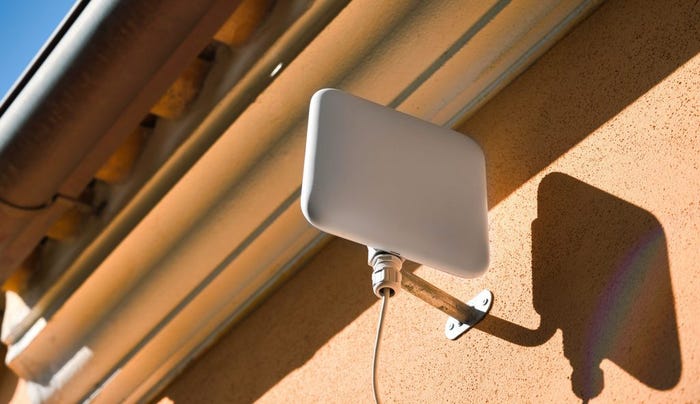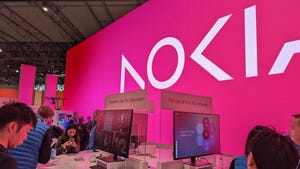Understanding broadband and its evolutionUnderstanding broadband and its evolution
Our panel of experts explore the current state of the fibre rollout and how technologies like Fixed Wireless Access and satellites are developing to provide additional techniques of improving the world’s internet access.
August 22, 2023

Our panel of experts explore the current state of the fibre rollout and how technologies like Fixed Wireless Access and satellites are developing to provide additional techniques of improving the world’s internet access.
Table of Contents
The legacy and future of broadband
Types of broadband: Full fibre, legacy, and cable networks
Fiber vs cable: Core differences and performance metrics
The role of PON in broadband connectivity
Exploring fixed wireless access and mobile broadband solutions
The rise of satellite connectivity and its global impact
Predictions and innovations for the next era of connectivity
The Future of the broadband sector
The ongoing evolution of broadband and its global implications
Broadband is a term that by this point is more or less synonymous with fixed internet connections – or access to the internet which is piped into a home or business and then disseminated out to devices via wifi or ethernet cable from a router. This is opposed to 5G or 4G mobile networks which connect directly to phones via towers and masts.
The legacy and future of broadband
There is presently a lot of investment and activity to replace 100 year old copper networks with fibre, which provide much faster download and upload speeds, with some regions further along in that process than others. This is the predominant way fixed connectivity is being upgraded, though in places where it is too hard or expensive to dig up the ground and lay fibre, satellites and Fixed Wireless Access points connected to 5G or 4G mobile networks can be deployed to hook up remote regions.
We gathered together a panel of industry experts to explore the current state of the broadband sector, what the trajectory of future innovations are, and what they will empower societies and businesses to do.
Types of broadband: Full fibre, legacy, and cable networks
David Tomalin, Group Chief Technology Officer at CityFibre kicks us off with some definitions of the three main types of broadband:
Full fibre networks
“Full fibre networks offer unrivalled high-speeds, are reliable, and use symmetrical broadband connections, enabling faster upload and download speeds compared to other types of networks. As the provider of the UK’s fastest wholesale broadband services, our full fibre network is built solely with fibre with no copper anywhere. Sometimes a full fibre network can be known as a fibre to the home (FTTH) network. These networks use very fine optical fibre to deliver connectivity directly to the premises (homes or businesses).”
Legacy networks
“Legacy networks, those mainly consisting of copper, use traditional copper telephone lines to transmit data. Given the explosion in data since the turn of the century, these copper networks have significant limitations in terms of speed and bandwidth capacity, especially over long distances. Powering copper networks also comes with significant energy cost, something that isn’t a factor with full fibre networks.”
Cable networks
“Cable networks, which are sometimes known as Hybrid Fibre-Coaxial (HFC) networks, use a combination of fibre optic cables and coaxial cables to provide internet and television services. The fibre optic cables carry data to local nodes, and from there, the signal is distributed through existing coaxial cables to individual premises. Cable networks can offer faster download speeds than copper, but typically have lower upload speeds compared to full fibre networks.”

Fibre vs cable: Core differences and performance metrics
Ragu Masilamany, Global Head of Solution Engineering and Labs at Amdocs provides some more detail on the ways in which these types of cable differ:
“The similarity between fibre and cable broadband is that optical fibre technology is used in the core of both cable and fibre (FTTH/FTTP) networks. The main difference between the two is in how the internet service is delivered between the core and premise – either using copper twisted pair, coaxial cable, or fibre all the way to the premise. Another difference is seen in whether fibre is delivered all that way to homes and business, or whether fibre is delivered to the neighborhood and the last mile is delivered using copper or coax cable.
“Performance wise, up until DOCSIS 3.X, uplink and downlink speeds were asymmetrical. For example, DOCSIS 3.1 technology supports theoretical speeds of 10Gbps downlink and 1-2Gbps uplink, whereas DOCSIS 4.X technology is expected to support 10Gbps symmetrical speeds on both uplink and downlink. FTTH on the other hand supports symmetrical multi-Gbps speeds and lower latency on today’s deployments.”
The Role of PON in broadband connectivity
There is also something called a Passive Optical Network, which Stephen Kingdom, CTO, Xantaro describes as: “PON (Passive Optical Network) technology is used for FTTH. XGS-PON is being deployed by many broadband providers today and enables ultra-fast broadband of up to 10Gbps symmetrical upload and download. We are also now starting to see commercial trials of 25G-PON (25Gbps symmetrically), offering even higher speeds and greater capacity.”
Of course, the only metrics that really matter when comparing all these types of broadband is the speed and reliability of the connection. Kelvin Chaffer, CEO at Lifecycle Software adds: “Cable broadband is like using a special cable to bring internet to your home. It’s fast and available in cities, but speeds can be affected if lots of people use it at the same time. On the other hand, fibre broadband is like data travelling through tiny strands of glass using light signals. It’s faster and more reliable than cable, and it can go to a street cabinet (FTTC) or straight to your place (FTTP/FTTH) for top-notch performance.
Exploring fixed wireless access and mobile broadband solutions
In places that are very remote or it is otherwise difficult to fulfil the ‘last mile’ of cabling, one alternative is to utilise Fixed Wireless Access (FWA). The way this usually works is an outdoor antenna fixed to a building, enabling an operator to link up its radio systems with the customer, who connects via some indoor customer premise equipment (CPE).
Mobile broadband and FWA
Martin Creaner, Director General of the World Broadband Association (WBBA) explains: “Mobile broadband is essentially using the mobile 4G or 5G network to gain broadband connectivity. In its simplest form, people can use their smartphones as a mobile hotspot to gain mobile broadband connectivity. You can also use a dedicated portable mobile router to provide mobile broadband connectivity. This router operates on a dedicated SIM card. Finally, people can use a 4G or 5G ‘fixed’ router in their home to gain broadband connectivity at home. This is often called ‘Fixed Wireless Access’, and is a way of delivering pretty high quality broadband in a rapid fashion to rural or difficult to access properties.”
If you can get a straight up fibre connection you probably would just do that, but there are some situations in which there might not be one. Kingdom says: “FWA utilises wireless technology to provide high-speed internet access to fixed locations, such as homes or enterprises. Fixed wireless transports data between two fixed points, and then typically propagated throughout a building using Wi-Fi. FWA is used in situations where laying fixed-line fibre is challenging. Performance can be affected by the weather, geographical constraints, and obstacles such as buildings or trees, etc.”
Masilamany notes the US and Middle East in particular are adopting a lot of FWA, but ultimately there may be a ceiling to how far it can scale.
“Both Fixed Wireless Access (FWA) and Fixed Broadband both provide customers with a means to receive a high-speed wifi connection. The technological difference is in the WAN technology used in the services. FWA leverages 4G or 5G mobile broadband to send and receive internet traffic, whereas Fixed Broadband uses one of fibre, xDSL or a DOCSIS cable network.
“The promise of 5G is to reduce the performance gap between these technologies to offer tens of Mbps speed, lower latency, the cost-effective carriage of traffic, and reliability. Locations such as the US and Middle East are showing a higher uptake of FWA to provide high speed broadband services.
“However, due to spectrum cost and scarcity, we’re yet to see whether a FWA service can scale to support the 50x data usage of a household compared with mobile broadband.”

The rise of satellite connectivity and its global impact
Another way to get connectivity in those hard to reach areas is via satellites, which as a business sector has grown a lot in the last few years with lots of investment and new companies hurling fleets into space, with perhaps the most well known of these being Elon Musk’s Starlink.
Satellite broadband
Masilamany says: “Satellite broadband utilises the connectivity beams provided by satellites in low-earth, middle-earth, and geo-earth orbits. The beams are directed downward and intercepted by satellite antennas to provide data traffic for the internet, managed services, telephony, and even video. Satellite teleports support the wireline infrastructure and, eventually, connectivity with hyperscalers or partner operators.
“Recent advancements in this space have enabled smartphones to connect directly to satellites, enabling low bandwidth applications such as messaging. This development promises the delivery of high-speed internet services direct to mobile devices in areas of poor mobile connectivity.”
Creaner adds that a lot of the action in the sector is with Low Earth Orbit (LEO) satellites.
“Satellite Broadband refers to a type of broadband provided from connection to Satellites. These Satellites are generally positioned in space in either Low Earth Orbit (LEO) – around 2,000km above the earth, or higher Orbits – up to 35,000 km above the earth.
“LEO broadband satellites, being much closer to the earth, exhibit much lower latency or delay than other satellite broadband solutions. This makes them more practical for services that are not very tolerant of delay, such as video conferencing or gaming. LEO broadband satellites also can have higher bandwidth than higher orbit satellites, enabling faster download and upload speeds. However, the downside of LEO satellites is that they are costly to run, and you need to launch a lot of them to cover the earth. Also, being in a much lower orbit, they tend to have a shorter lifetime than other satellites.
“Currently, a pretty high profile LEO Satellite broadband solution is the Starlink project by SpaceX. Starlink plans to eventually launch up to 42,000 LEO satellites to provide global internet access, and has already launched over 1,000 satellites.”
Getting connectivity from a satellite is probably going to be choice driven by necessity rather than desire, either due to geography, war, or other disrupting factors. Chaffer adds: “With satellites the internet connexion is supported by satellites in space. Your request goes to the satellite, which sends and receives data through an earth station. It’s a preferable option for remote areas where traditional cables can’t reach but usually has more latency and data limitations. In some areas of the world, due to a lack of infrastructure or wars, this is the only option available.”
Tomalin notes that since the invasion of Ukraine satellites have been deployed to provide emergency connectivity where terrestrial towers have been destroyed – but there are limits to what it can do.
“Recently we have seen this technology deployed in Ukraine to provide people with emergency access to the internet, but the latency issues with the speed of the transmission from base station to satellite, to end user, makes it difficult for satellite technology to compete with full fibre broadband and 5G mobile networks.”
Kingdom expands on the down sides of using LEO satellites to access the internet: “The main drawbacks to LEO are lower capacity and higher latency, due to the long distance the signals need to travel. LEO can also be affected by weather conditions, reducing the reliability of the connection.”

Predictions and innovations for the next era of connectivity
Whether it’s extending the fibre footprint, growing fleets of LEO satellites, or improving FWA capabilities, there is lots of activity in the broadband sector. We asked our panel of experts what we can expect to see in the next few years.
The future of the broadband Sector
“Full fibre networks offer the greatest reach, fastest speeds and lowest latency of any network,” says Kingdom. “We are already seeing 25G-PON solutions being deployed which are capable of delivering speeds of up to 25Gbps connectivity. It won’t be long until the broadband sector reaches 50G and 100G, supporting the next wave of business and consumer applications.
“However, once you’ve got the connection to a property, a challenge becomes the in-home distribution of the services. Ethernet and Wi-Fi are the two mainstream solutions for providing connectivity within the home and have limitations in terms of coverage and the speeds they can support. However, as with all technology, Wi-Fi is constantly evolving – we are currently using Wi-Fi 6E, and we expect Wi-Fi 7 solutions to come in early 2024.”
Masilamany says broadband is evolving in two areas: “One, 10Gbps symmetrical broadband is being trialled by both fibre and cable operators. Symmetrical services are key for gaming – especially cloud gaming – and video conferencing due to the low latency internet it provides, so customer experience will improve as a result.
“Two: The early adoption of WiFi 6/6E is showing promise. WiFi 7 standards are also being developed – i.e., IEEE 802.11be – which can give theoretical speeds of 46 Gbps, compared to the 9.6 Gbps of WiFi 6.
“Aside from these two developments, I believe the biggest change required is seamless mobility between 5G and broadband, to offer ubiquitous connectivity.“
Challenges for broadband infrastructure providers
Tomalin says as apps and tech in general gets more sophisticated and therefore more demanding on networks in the years to come, broadband networks could start coming under strain.
“Technology companies – across all market sectors – are already investing in ever-more intelligent, immersive and cloud reliant applications to serve, engage and enable people at home and work. This will not only drive the need for more day-to-day bandwidth to serve both residential and business premises, it will demand superior network reliability and ultra-low levels of jitter, latency and packet loss. This will begin to test the calibre of people’s existing connections, with legacy infrastructure struggling to compete.
“Our job as an infrastructure provider is to provide the solid network foundation and provide the broadband products that enable future innovation, rather than holding it back (which is what we’ve seen in the UK’s past). The new breed connectivity products that will evolve to serve all of these applications (and more) will demand an underlying access network that is truly unconstrained for the future. A network built ready for anything. And that’s what our network is designed for.”

10 gigabit broadband availability and latency improvements
Creaner believes we’ll start to see 10 Gigabit connections becoming widely offered around the globe, and that latency will become increasingly important: “The WBBA has created a Broadband Generational Roadmap that predicts how the characteristics of broadband are likely to evolve over the coming decade. Broadband speeds will certainly continue to grow. In some parts of the world, consumers already have access to gigabit broadband.
“Over the coming years we will begin to see 10 Gigabit broadband becoming widely offered. We will also see increased broadband availability of all types in the less developed parts of the world. But the focus is not just on broadband speed. Latency is becoming increasingly important as a broadband characteristic – particularly in gaming and the emerging metaverse. And the reliability/availability/security of your broadband connection is becoming a critical success factor.”
Broadband and smart cities
Finally, Chaffer says that broadband, and connectivity in general, will help manifest the often referenced ‘smart city’ concept in future years, in which seamless connectivity between various IoT nodes will allow for things like self-driving cars: “Lightning-fast speeds will become the norm, with gigabit speeds for an improved internet experience. Whether streaming, gaming, or working, you can expect a seamless and ultra-fast connection.
“Additionally, the integration of 5G technology (and 6G after that) will bring even faster speeds, lower delays, and open up a world of possibilities with support for technologies like the Internet of Things (IoT), augmented reality (AR), virtual reality (VR), and self-driving cars.
“Broadband will power smart homes and smart cities, making our environments more interconnected and efficient. I believe sustainability takes centre stage. Energy efficiency and eco-friendly practices will be prioritised, ensuring a greener broadband future for all.”
The ongoing evolution of broadband and its global implications
In conclusion, the traditional form of fixed broadband is undergoing a once in a generation upgrade campaign with the fibre rollout, and while alternatives such as FWA and satellite connectivity are limited in some measurements, the technology is progressing, and with all the investment momentum behind it we are sure to see some interesting new moves in these sectors in the coming years.
For a full analysis of the long-term potential of 5G FWA check out our deep dive, and for a detailed explanation of mobile networks check out What is 5G? and What is 6G?
Get the latest news straight to your inbox. Register for the Telecoms.com newsletter here.
Read more about:
Tech ExplainersAbout the Author
You May Also Like










.png?width=300&auto=webp&quality=80&disable=upscale)


_1.jpg?width=300&auto=webp&quality=80&disable=upscale)